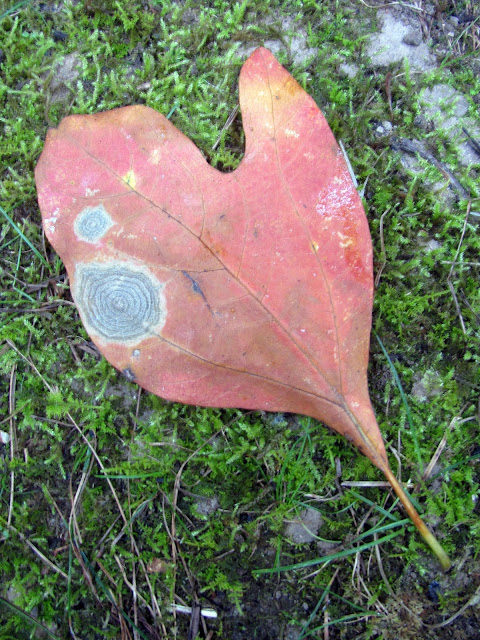yellow jackets gorging
on king solomon's seal fruit
for their last supper
Therein lies a strange story. Like honeybees, yellow jackets are social insects that live in colonies with a queen, female workers and males. The queen is the only one who overwinters. When she emerges in the spring, she builds a small paper nest and lays eggs which hatch and mature into adult workers. The workers expand the nest, defend the nest entrance, forage for food, and feed the queen and larvae. At the peak of population expansion, the queen produces new queens and males, which leave the nest to mate in flight. The fertilized queens seek a protected place to spend the winter while the old queen and the males who mated die. With colder weather, the rest of the colony also begins to die.
So what causes the end of life sugar feeding frenzy? Most of the summer the adults seek out sources of protein from insects and fish, which they chew up and feed to the larvae. In a win-win exchange known as trophallaxis, the larvae secrete a sugary substance that the adults crave. But in late summer and fall, sources of food become scarce and the yellow jackets scavenge for anything they can find, often attracted to human food sources. Instead of being benevolent destroyers of insect pests in the garden, they become people pests as they are drawn to picnics, outdoor restaurants and garbage cans. They will also rob honey from bee hives, which can weaken the honey bee colony. And to people who are allergic, their sting can be fatal. Some people have swallowed live yellow jackets from an open soda, resulting in a life-threatening sting.
The best defense is prevention -- keeping food and garbage cans tightly covered. Insecticide sprays may be used on the nest, with caution, as well as non-toxic traps. And a hard freeze will kill all the yellow jackets except the new queens.
Fortunately, I was not near the nest entrance of the yellow jackets I photographed as they fed on King Solomon's Seal berries. In their eagerness for sugar, they hardly seemed to notice my presence. But I have learned not to eat fruit while I'm harvesting, so I don't get kissed by a yellow jacket.














